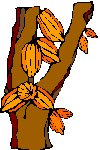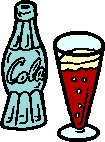What is Caffeine?

Caffeine is the most widely used drug in the world. It’s a physically addictive stimulant that is naturally produced in the leaves, seeds and fruits of many plants. Commonly found in coffee, tea, soft drinks, chocolate and a wide variety of over-the-counter medications, it is legal and easily accessible.
FYI, When coffee is decaffeinated by chemical process, the caffeine that remains is sold from coffee companies to many beverage companies. That shows you how valuable it is to the soft drink industry.
A Short History of Caffeine…
 People have enjoyed caffeinated beverages for thousands of years. The earliest record of caffeine consumption dates back to around 2700 B.C., when Chinese Emperor Shen Nung drank strong, hot brewed tea.
People have enjoyed caffeinated beverages for thousands of years. The earliest record of caffeine consumption dates back to around 2700 B.C., when Chinese Emperor Shen Nung drank strong, hot brewed tea.
Coffee originated in Africa around 575 A.D., where beans were used as money and consumed as food. Records show that 11th century Arabs drank coffee regularly. Spanish conquistadors first exploring what is now Mexico, were served coffee by Montezuma, the mighty Aztec ruler, in 1519.
Revolutionary Americans made a nationwide switch from tea to coffee in the 18th century as the caffeinated drink of choice. This was done to spite the Tea Act, from which heavy taxes were laid on tea imported by Americans. Eventually, the Boston Tea Party was held, in which revolutionaries dumped a large quantity of tea cargo from a boat into the Boston Harbor in protest of the high tax placed on tea.
The world’s first caffeinated soft drinks were created in the 1880’s.
In 1958, caffeine was recognized by the American Food and Drug Administration (FDA) as being Generally Recognized As Safe (GRAS).
Caffeine
 In its natural form, caffeine tastes very bitter, but most caffeinated drinks have gone through enough processing to camouflage the bitter taste. Most teens get the majority of their caffeine intake through soft drinks, which can also have added sugar and artificial flavors. Of course a lot of teens enjoy cappuccino or caffe latte and a couple of those will give you enough caffeine to make several people “wired”. Caffeine affects everyone in similar ways. Like all stimulants, caffeine raises blood pressure and its effects range from mild alertness to heightened anxiety and body tension. In moderate doses it can produce “coffee jitters”, headaches, disorientation, and insomnia. Regular users who suddenly stop consuming caffeine may experience withdrawal symptoms including drowsiness, headaches, irritability, nausea and vomiting and depression. Although the amounts of caffeine needed to affect each person differ. People who drink caffeine regularly develop a reduced sensitivity and require higher doses of caffeine to achieve the same effects as someone who doesn’t consume it regularly. This means that the more caffeine you consume, the more caffeine you need to feel the same effects.
In its natural form, caffeine tastes very bitter, but most caffeinated drinks have gone through enough processing to camouflage the bitter taste. Most teens get the majority of their caffeine intake through soft drinks, which can also have added sugar and artificial flavors. Of course a lot of teens enjoy cappuccino or caffe latte and a couple of those will give you enough caffeine to make several people “wired”. Caffeine affects everyone in similar ways. Like all stimulants, caffeine raises blood pressure and its effects range from mild alertness to heightened anxiety and body tension. In moderate doses it can produce “coffee jitters”, headaches, disorientation, and insomnia. Regular users who suddenly stop consuming caffeine may experience withdrawal symptoms including drowsiness, headaches, irritability, nausea and vomiting and depression. Although the amounts of caffeine needed to affect each person differ. People who drink caffeine regularly develop a reduced sensitivity and require higher doses of caffeine to achieve the same effects as someone who doesn’t consume it regularly. This means that the more caffeine you consume, the more caffeine you need to feel the same effects.
 Caffeine moves through the body within a few hours after it is consumed. It is not stored in the body, but you may feel its effects for up to 6 hours if you’re sensitive to it. Caffeine has health risks for certain users. Small children are extremely sensitive to caffeine. Caffeine can aggravate heart problems or nervous disorders, and some teens may not be aware that they are at risk. Although the effects of caffeine vary from one person to the next, health care providers recommend that people should consume no more than about 100 milligrams of caffeine daily.
Caffeine moves through the body within a few hours after it is consumed. It is not stored in the body, but you may feel its effects for up to 6 hours if you’re sensitive to it. Caffeine has health risks for certain users. Small children are extremely sensitive to caffeine. Caffeine can aggravate heart problems or nervous disorders, and some teens may not be aware that they are at risk. Although the effects of caffeine vary from one person to the next, health care providers recommend that people should consume no more than about 100 milligrams of caffeine daily.
What products contain caffeine and how much?
|
Drink/Food |
Amt. of Drink/Food |
Amt. of Caffeine (mg) |
| Coffee Brewed, drip method Instant Decaffeinated Espresso (1 oz. cup) Brewed, imported brands |
8 ounce cup 8 ounce cup 8 ounce cup 1 ounce cup 8 ounce cup |
70 – 120 60 – 85 2 – 4 30 – 50 25 – 110 |
| Jolt soft drink | 12 ounces | 71.2 |
| Mountain Dew | 12 ounces | 54.0 |
| Coca-Cola | 12 ounces | 45.6 |
| Diet Coke | 12 ounces | 45.6 |
| Pepsi | 12 ounces | 37.2 |
| 7-Up | 12 ounces | 0 |
| Ginger Ale | 12 ounces | 0 |
| Iced tea | 12 ounces | 70 |
| Herbal tea | 12 ounces | 0 |
| Dark chocolate | 1 ounce | 20 |
| Milk chocolate | 1 ounce | 6 |
| Cocoa beverage | 5 ounces | 4 |
| Chocolate milk beverage | 8 ounces | 5 |
| No-Doze | 1 tablet | 200 |
| Vivarin | 1 tablet | 200 |
| Midol | 2 tablets | 64 |
| Anacin | 2 tablets | 64 |
| Excedrin | 2 tablets | 130 |
BTW, Dexatrim has 200 mg per tablet (and don’t forget about coffee ice cream, yum!)

Kicking the caffeine habit is never easy, so the best way is to cut back slowly. Try cutting your intake by substituting non-caffeinated drinks for caffeinated sodas and coffee. Examples include water, caffeine-free sodas, fruit juices, and sports drinks such as Gatorade. Keep a record of how many caffeinated drinks you have each day, and substitute one drink per week with a caffeine-free alternative until you’ve gotten below the 100-milligram mark, if you want to slowly get off of caffeine. Make sure you read labels on soft drinks as some orange sodas even contain caffeine.
For more on the caffeine content of beverages see Caffeinated Beverages >>
Caffeine Quick Facts
- Caffeine is a naturally occurring substance found in the leaves, seeds or fruits of more than 60 plants.
- Coffee and cocoa beans, kola nuts and tea leaves are used to make beverages such as coffee, tea, cola drinks, and chocolate.
- Caffeine is used as a flavor in a variety of beverages. (See table on next page)
- Caffeine will not help “sober up” someone who has consumed too much alcohol.
- Caffeine was used many years ago by some doctors as an antidepressant because it perked patients up. Just an FYI, not a suggestion.
(Hey, I love Starbucks too, just giving you the facts. Ask any dieter about how marvelous an appetite suppressant caffeine is.)
Caffeine Content of Popular Beverages
![]() You might be giving these to your child, to a child you baby-sit for or drinking them yourself. This information was requested by parents, teachers and teens who were having trouble sleeping and they thought maybe caffeine was keeping them awake. Remember, caffeine is like other drugs, you will build up a tolerance to it AND you will withdrawal from it if you stop it suddenly. (Ask anyone who has missed their coffee for a day – better yet, just avoid the person).
You might be giving these to your child, to a child you baby-sit for or drinking them yourself. This information was requested by parents, teachers and teens who were having trouble sleeping and they thought maybe caffeine was keeping them awake. Remember, caffeine is like other drugs, you will build up a tolerance to it AND you will withdrawal from it if you stop it suddenly. (Ask anyone who has missed their coffee for a day – better yet, just avoid the person). ![]()
Yes, there are new waters that will be on market shelves soon with caffeine in them, if caffeine is a problem for you always read the label! If you love your caffeine, enjoy it, but become informed.
![]()
| (As a general rule, if caffeine is in the soda, it’s in the diet one also.) In order from most to least… | |
| 12-ounce Beverag e | Milligrams |
| Jolt | 71.2 |
| Pepsi One | 55.5 |
| Mountain Dew | 55.0 |
| Mountain Dew Code Red | 55.0 |
| Diet Mountain Dew | 55.0 |
| Kick Citrus | 54.0 |
| Mellow Yellow | 52.8 |
| Surge | 51.0 |
| Tab | 46.8 |
| Diet Coke | 45.6 |
| Shasta Cola (Diet) | 44.4 |
| RC Cola – (Diet) | 43 |
| Dr. Pepper (Diet) | 43 |
| Sunkist Orange (Diet) | 40 |
| Pepsi-Cola | 37.5 |
| Pepsi Twist – (Diet) | 37.5 |
| Diet Pepsi | 36.0 |
| Coca-Cola Classic | 34.0 |
| Cherry Coke (Diet) | 34.0 |
| Snapple Flavored Teas (Diet) | 31.5 |
| Canada Dry Cola | 30.0 |
| A&W Creme Soda | 29.0 |
| Nestea Sweet Iced Tea & (unsweetened) | 26.5 |
| Barq’s Root Beer | 23.0 |
| A&W Diet Creme Soda | 22.0 |
| Lipton Brisk, All Varieties | 9 |
| 7-Up | 0 |
| Sprite | 0 |
| Minute Maid Orange | 0 |
| A & W Root Beer | 0 |
If you’re ever really bored, check out some of the websites of the companies that make these ‘soft-drinks’, those sites cost a LOT of money to create! What a huge industry. Amazing what we’ll pay for carbonated water and sugar! Guess they will never sponsor this site. Oh well.
![]()
![]() Coffee, Tea, etc.
Coffee, Tea, etc.
| 8-ounce Beverage | Milligrams |
| ~*~*~*~*~*~*~*~*~*~*~*~*~ | |
| Coffee, Drip | 115-175 |
| Coffee, Brewed | 80-135 |
| Coffee, Espresso (2 ounces) | 100 |
| Tea, iced | 47 |
| Tea, brewed, U.S. brands (avg.) | 40 |
| Tea, instant | 30 |
| Tea – green | 15 |
| Hot chocolate mix | 14 |
| Coffee, decaf, brewed | 3-4 |
| Coffee, decaf, instant | 2-3 |
SOURCES: National Soft Drink Association, US Food and Drug Administration, PepsiCo and The Coca-Cola Company
